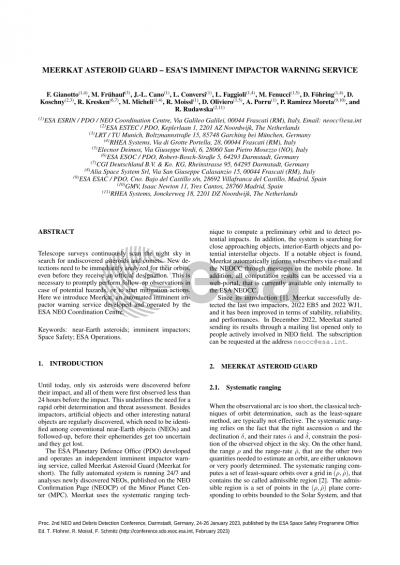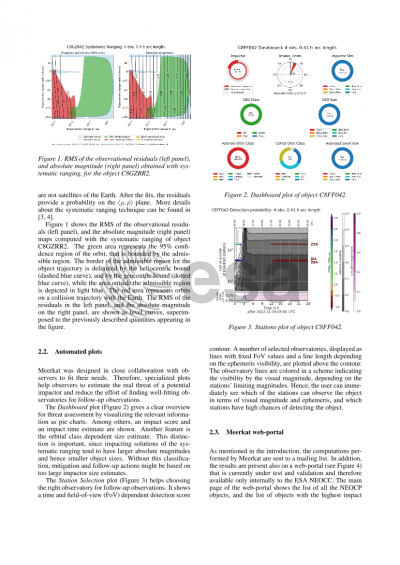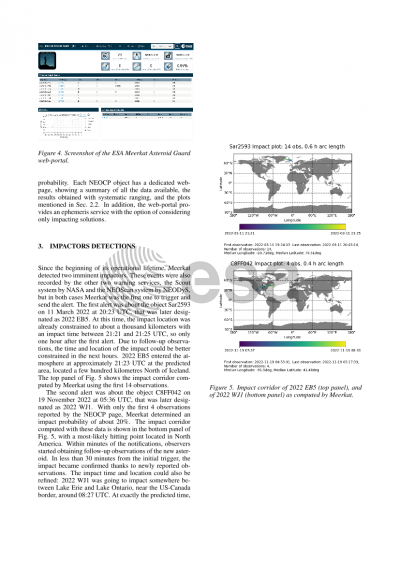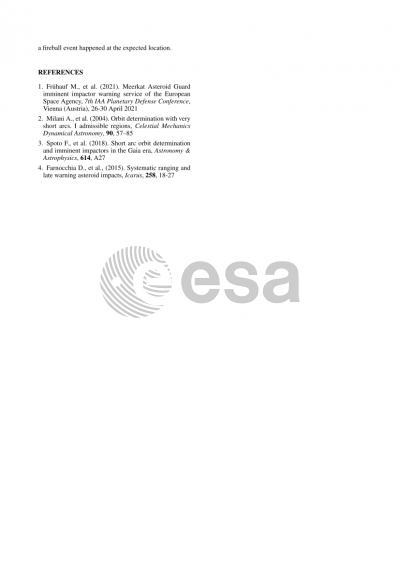Document details

Abstract
The European Space Agency (ESA) developed an independent imminent impactor warning service, called Meerkat Asteroid Guard (Meerkat for short). The fully automated system is running 24/7 and analyses newly discovered near-Earth objects, published on the NEO Confirmation Page of the Minor Planet Center. Meerkat uses the Systematic Ranging technique to compute a preliminary orbit and to detect potential impacts. In addition, the system is searching for close approaching objects, interior-Earth objects and potential interstellar objects. If a notable object was found, Meerkat automatically informs subscribers via e-mail. In addition, all computation results can be accessed via a website or an API request. The access is currently restricted since the software is in the validation process.
Meerkat was designed in close collaboration with observers to fit their needs. Therefore, specialized plots help observers to estimate the real threat of a potential impactor and reduce the effort of finding well-fitting observatories for follow-up observations. Based on the preliminary orbits, Meerkat offers the service to compute ephemeris for follow-up observations. A feature is the option to exclude non-impacting solutions.
Among the main imminent impactor warning systems, Meerkat was the first to trigger an alert about the object Sar2593 on 11 March 2022 at 20:23 UTC. At this time, the impact location was already constrained to about a thousand kilometers with an impact time between 21:21 and 21:25 UTC, so only one hour later. Due to follow-up observations, the time and location of the impact could be better constrained in the next hours. Sar2593, later designated as 2022 EB5, entered the atmosphere at approximately 21:23 UTC at the predicted area. This object has been the first imminent impactor since the launch of Meerkat and demonstrated the system’s capabilities.
Preview





